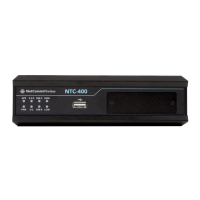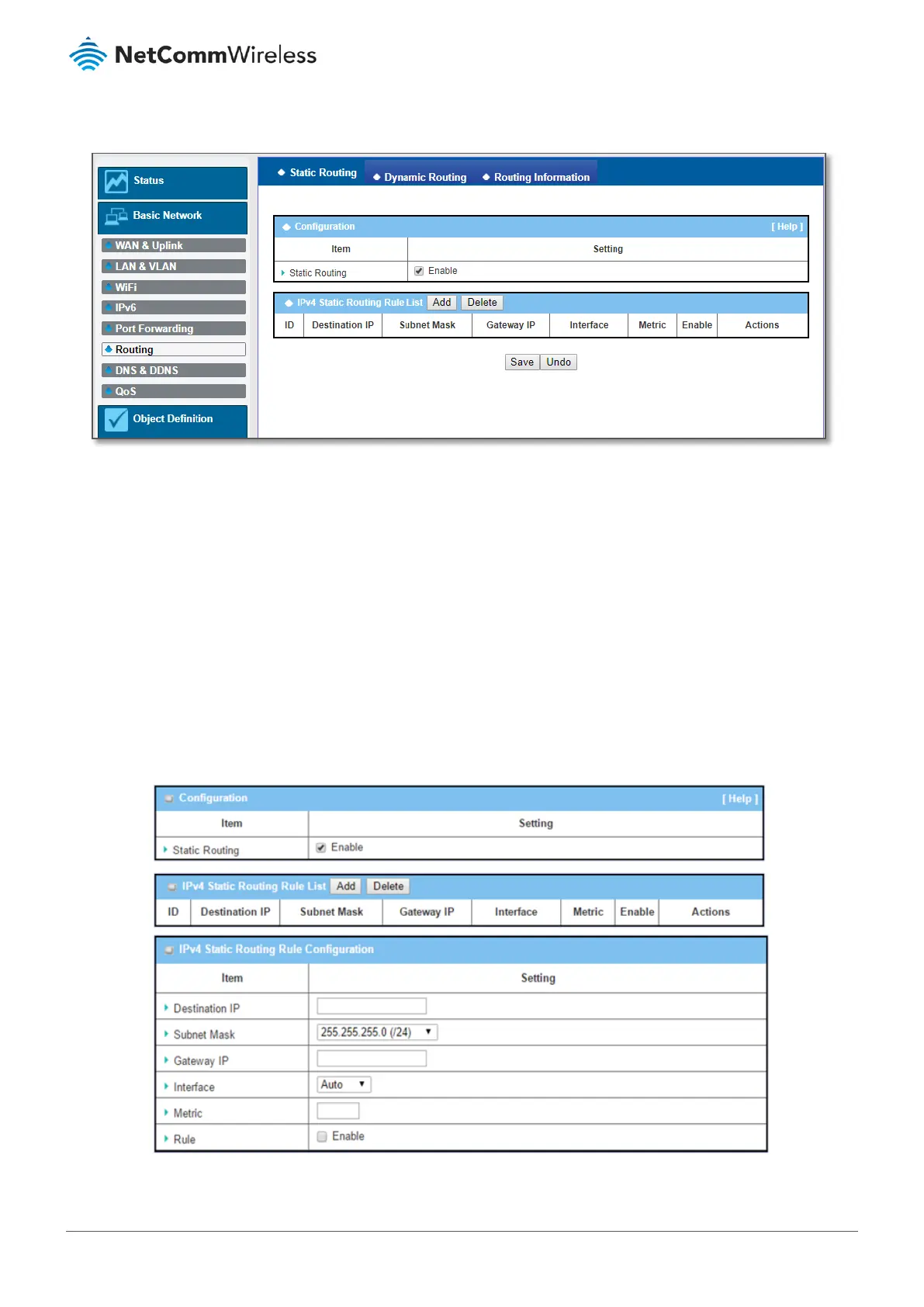3.6 Routing
Figure 159 – Routing
If you have more than one router and subnet, you will need to enable the routing function to allow packets to find the proper
routing path and allow different subnets to communicate with each other. Routing is the process of selecting the best path
through a network. It is performed for many kinds of networks, like electronic data networks (such as the Internet), by using
packet switching technology. The routing process usually directs forwarding on the basis of routing tables which maintain a
record of the routes to various network destinations. Thus, constructing routing tables, which are held in the router's
memory, is very important for efficient routing. Most routing algorithms use only one network path at a time.
The routing tables record your pre-defined routing paths for specific destination subnets. These are static routes. However, if
the contents of routing tables record the obtained routing paths from neighbour routers by using some protocols, such as
RIP, OSPF and BGP, this is called dynamic routing.
3.6.1 Static Routing
Figure 160 – Static Routing

